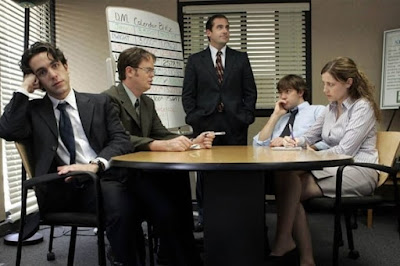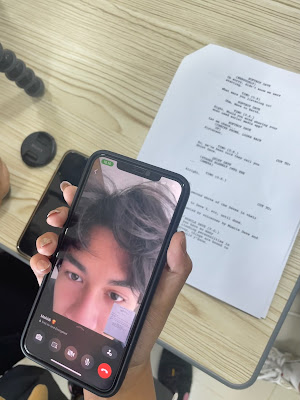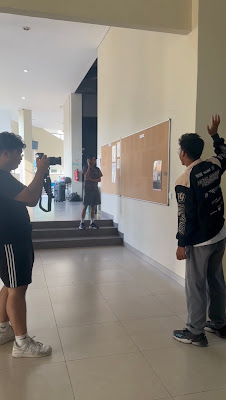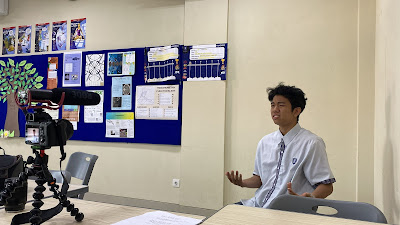A Level Media Studies
This is a critical self-reflection of my team's documentary project, 'Dave(s).' This blog post is written by me (Sharon).
In our brief, we were informed to create a 3 to 5-minute documentary opening with a sub-genre of our own choice. My group decided to do a 'mockumentary' targeting general students and/or high-schoolers (15-25 years of age; teenagers to young adults), most specifically, Gen-Zs exposed to the meme culture.
1. How do your products represent social groups or issues?
'Dave(s)' focuses on high school students with contradicting personalities, morals, attitudes, and lifestyles despite sharing the same name, Dave, We aimed to include a variety of stereotypes of each and every one of the Daves through subcultures in typical high schools nowadays. The personalities to represent include jocks, players, nerds, soft boys, introverts, athletes/a "gym rat", and outcasts (a character who is not called Dave, but instead referred to as 'Not Dave'/Kevin). One of the biggest social groups we positively represent is the LGBTQ+ community through Happy Dave. By all these stereotypes we attempt to represent and conform to, we over-exaggerate these traits and qualities to present a comedic effect to the audience for a good laugh. Here, the audience can find themselves in these Daves, such as Happy Dave (a part of the LGBTQ+ community - which is a large community in this era) as per the Uses and Gratifications Theory of personal identity. They may relate to them in certain ways, for instance, being 'accepted' for being the person they are. To add, these Daves are conveyed as either jocks and players (self-absorbed, overly confident, girl-craze, "popular"), happy (body language, cheerful always), nerds, soft boys (a calm, collected, introverted person), creepy (terrifyingly quiet, someone who sits alone in the back of a classroom, 'concealed' through the black hoodie), outcasts (they're just, there). With these conventions, Stuart Hall's Reception Theory may suggest that the audience acknowledges the directors' message in this media text (mockumentary) and perceives the way the directors deliver the messages. Such as being as kind and well-mannered as Softboy Dave, not being 'jocks' like Player Dave, and to recognize Happy Dave's positivity. The representation here is that Player Dave fails to interact with girls, the non-diegetic sound/music stops as the camera pans and zooms into Player Dave's face, indicating an awkward silence (second-hand embarrassment as the audience) out of embarrassment and humiliation. Nonetheless, this aimed to be a satirical mockumentary with a diversity of stereotypes and representations, along with personality traits, to deliver the message of - the saying - "Don't judge a book by its cover," and to embrace diversity, no matter how different you are from someone, everyone has their own place in society. This issue of not wanting to talk to, or be friends with certain people, or groups of people due to preconceptions in their heads about them, has grown in this era. So, therefore, we hope this mockumentary can help eliminate that prejudice. For example, students avoiding interactions with Creepy Dave simply because he is private and weirdly quiet does not mean he is a predator - he may be in need of friends due to his introverted manners. This mockumentary's unserious and playful nature is thoroughly for comedic and satirical effects for caricatures, this means that these stereotypes aren't all negative all along.
3. How do your products engage with the audience?
This mockumentary demographically targets teenagers to young adults, students and/or high-schoolers of ages 15-25. One way that helps us psychographically reach them would be through stereotypes of typical students in high schools that we have included in our documentary. According to the Uses and Gratifications theory of personal identity, audiences of this mockumentary may see themselves in the Daves/one of the Daves through the subcultures within a high school including jocks, players, nerds, soft boys, creepy, happy, athletes; one way to engage with the audience. Such that those who are highly confident (in terms of being "capable" of pulling/attracting girls), egotistical, friendly, and a so-called "player" in typical high schools, may see themselves in Player Dave. Barthes' cultural code plays a role in targeting the general population too, that being through the viral Internet meme of the "Josh Fight" (2021) in which anyone named Josh could participate in the fight to decide who gets to keep the name 'Josh'. As a matter of fact, that meme has become our blueprint/where we got the general idea for this mockumentary. This means that those Gen-Zs (or more or less teenagers to young adults) who have seen this meme could understand the reference that we have made in this mockumentary (Dave(s)), which enables us to get them hooked and interested. Moreover, this is due to that technology revolves around everyone nowadays (it has become a daily routine/factor), enabling the spread of news (e.g. the "Josh Fight" meme) easily. The contradicting personalities and attitudes of these high-schoolers are purposely over-exaggerated by us to illustrate the comedic effects, stupidity, and absurdity of these characters to showcase a satirical, mockery, and to make it implicitly funny. For example, featuring Levi Strauss' binary opposites, Player Dave gets rejected by every girl he hits on despite the fact that he is overly confident (narcissistic). The binary opposites here describe how Player Dave believes and exhibits the image of being a "player" but in an actual manner, is not (due to the rejections shown on the montage). 'Dave(s)' is also a participatory documentary that interacts/engages with the audience by including the interviewer's off-screen questions in the final product, and even during Player Dave's montage where he interacts with the camera/the audience to look at his act of attempting to talk to girls. This could make the audience feel a part of the documentary, a part of the journey, as well as being a student in that high school.
4. How did your research inform your products and the way they use or challenge conventions?
Starting this project, I have researched several mockumentaries, such as Cunk on Earth, and American Vandal - which inspired the flow of 'Dave(s)' most, we can conclude through Steve Neale's genre theory - that these conventions set audiences' expectations - that mockumentaries conform to typical conventions of breaking the fourth wall, directing interviews, hand-held camera shots, a natural look, satire, and caricatured stereotypes. Therefore, we conformed to the blueprint of mockumentaries, such as including interviews with all 6 Daves, with each interview explicitly showing their contradicting personalities. Another one would be through the over-exaggeration of stereotypes, for example, Happy Dave represents the LGBTQ+ community positively via being overly 'expressive,' is always cheerful, wears a pink sweater, and frequently uses body language/moves their body a lot. This is demonstrated through the low camera angles that convey Happy Dave's positive character, to be centralized, and to show the body language better. To further extend the comedic and satirical effects in this mockumentary, the usage of montages of Player Dave failing miserably in talking to girls and high school students calling 'Not Dave'/Kevin as Dave, Creepy Dave's unexpected improvised action on coming closer to the camera to 'scare' the audience away - but hilarious in a way -, and Happy Dave's expressive mockery comment ("He's not that muscly") on Muscle Dave's muscle flex. These montages are shot in a hand-held manner to add comedic aspects, which conforms to typical conventions of mockumentaries, perhaps to heighten the intensity and chaos, such that 'Not Kevin' gets gradually annoyed as people call him 'Dave,' as well as Player Dave's intensity in failing. 'Not Dave''s annoyance can be seen through the camera lenses being out of focus constantly as the handheld movement gets shakier. Nonetheless, long shots are used in Player Dave's montages to establish a bigger picture of the school environment and to wholly present their acts, whereas medium/medium close-up shots are used in 'Not Dave''s montages to capture his expression of annoyance better. Overall, with the colour tone of this mockumentary, we went with the natural settings from the camera to conform to mockumentaries' conventions of being lifelike and realistic (no significant/many edits in the colour scheme/tone) - can be seen from The Office which the colour tone seems so natural to the audience. Moreover, with research on thumbnails of documentaries, one of them being Keeping Up With the Kardashians, we have conformed to these conventions of giving a gist of the leading characters through the thumbnail. Therefore, we have developed our thumbnail with all 6 Daves standing in a line in a medium shot, each showing their characters via facial expressions and body gestures, with an edited title written "Dave(s)" right above.














































